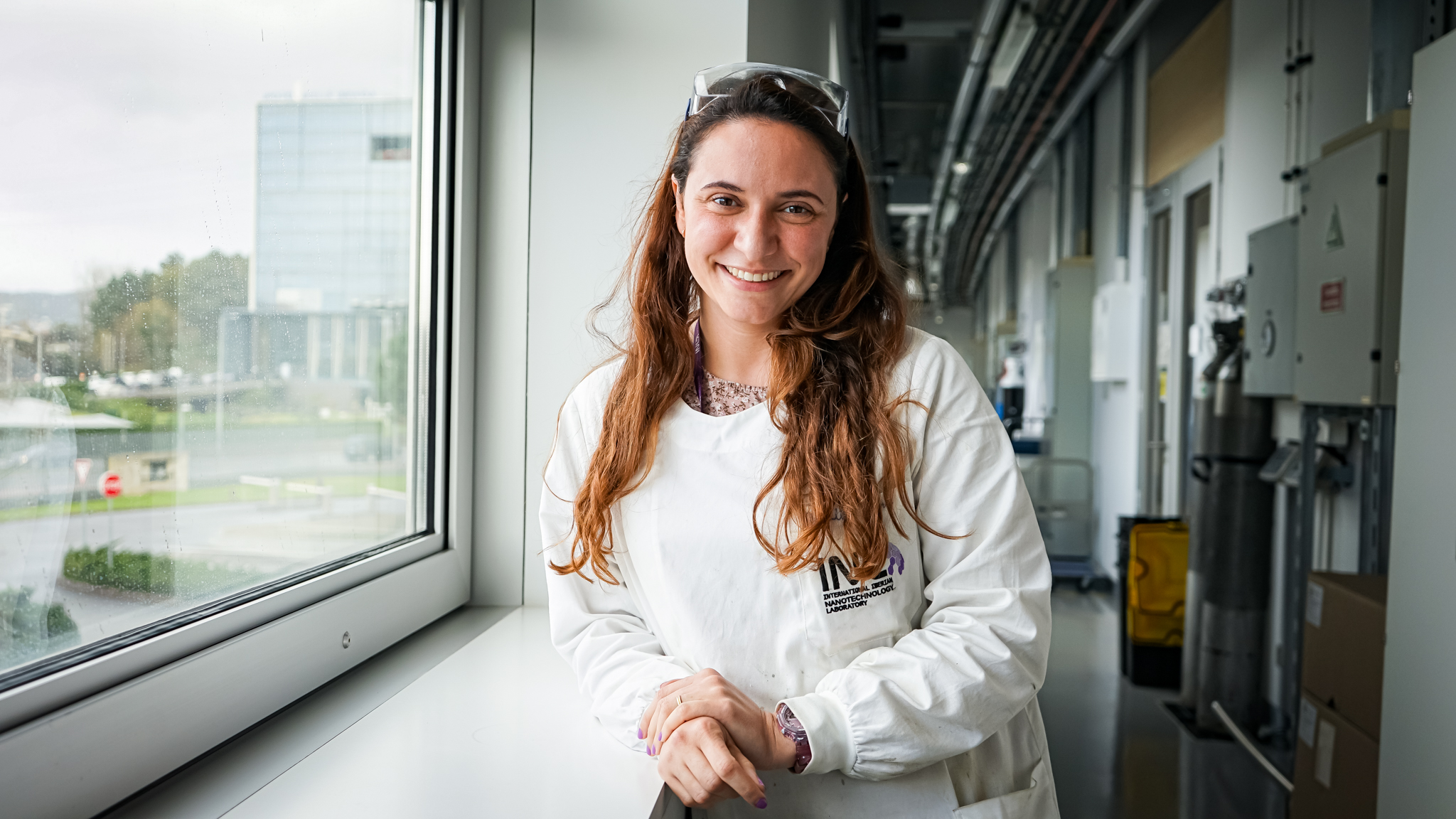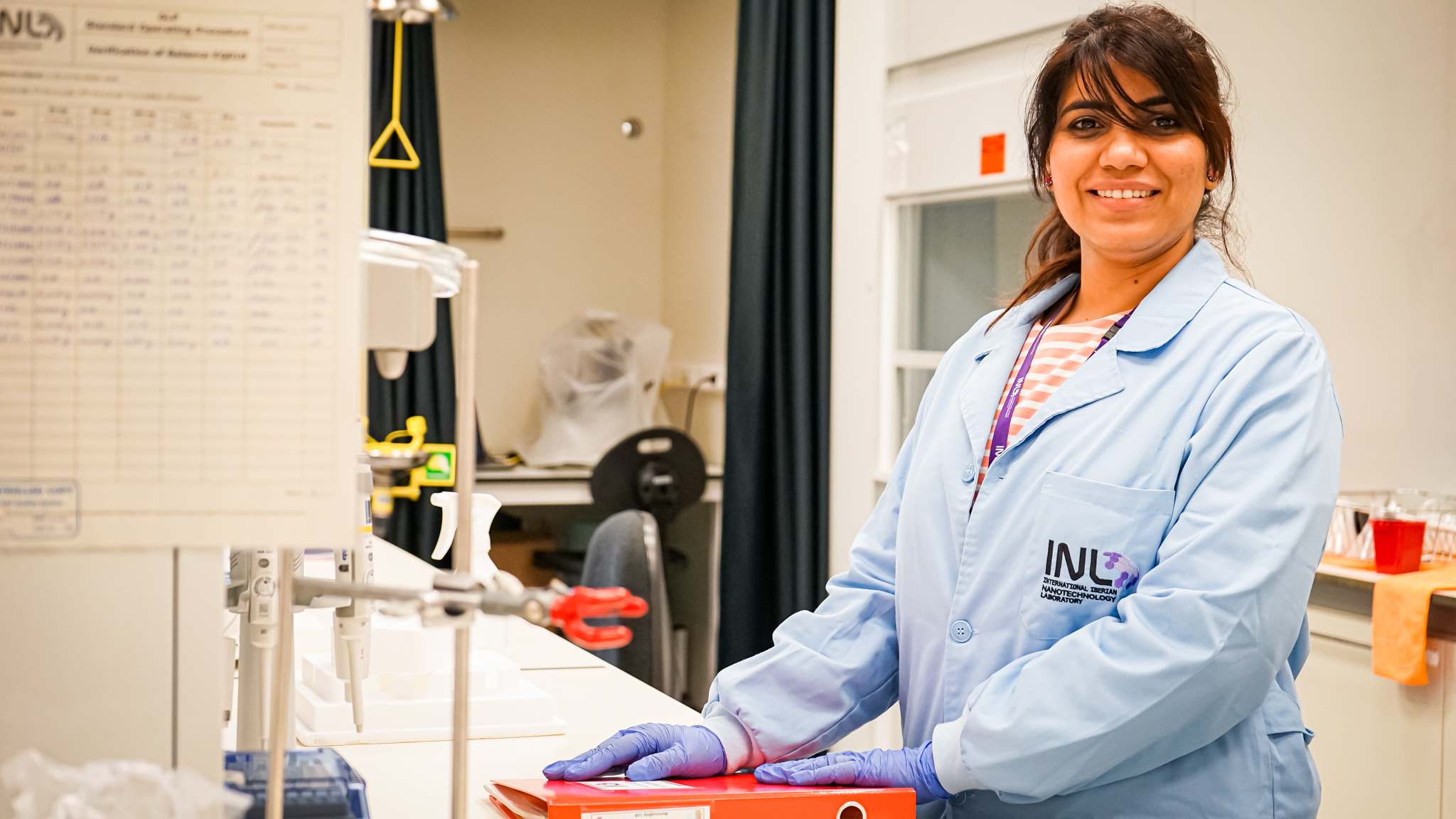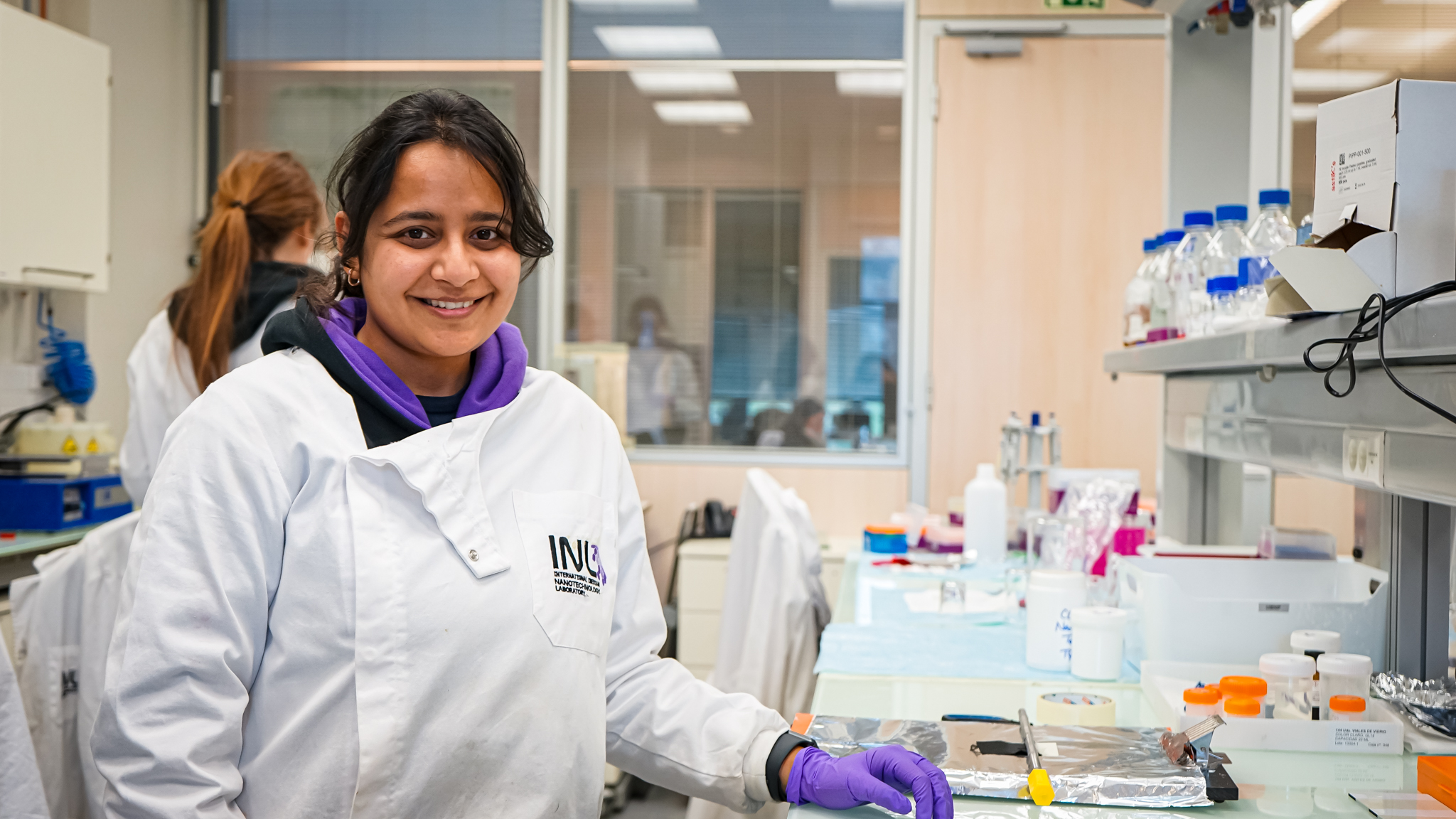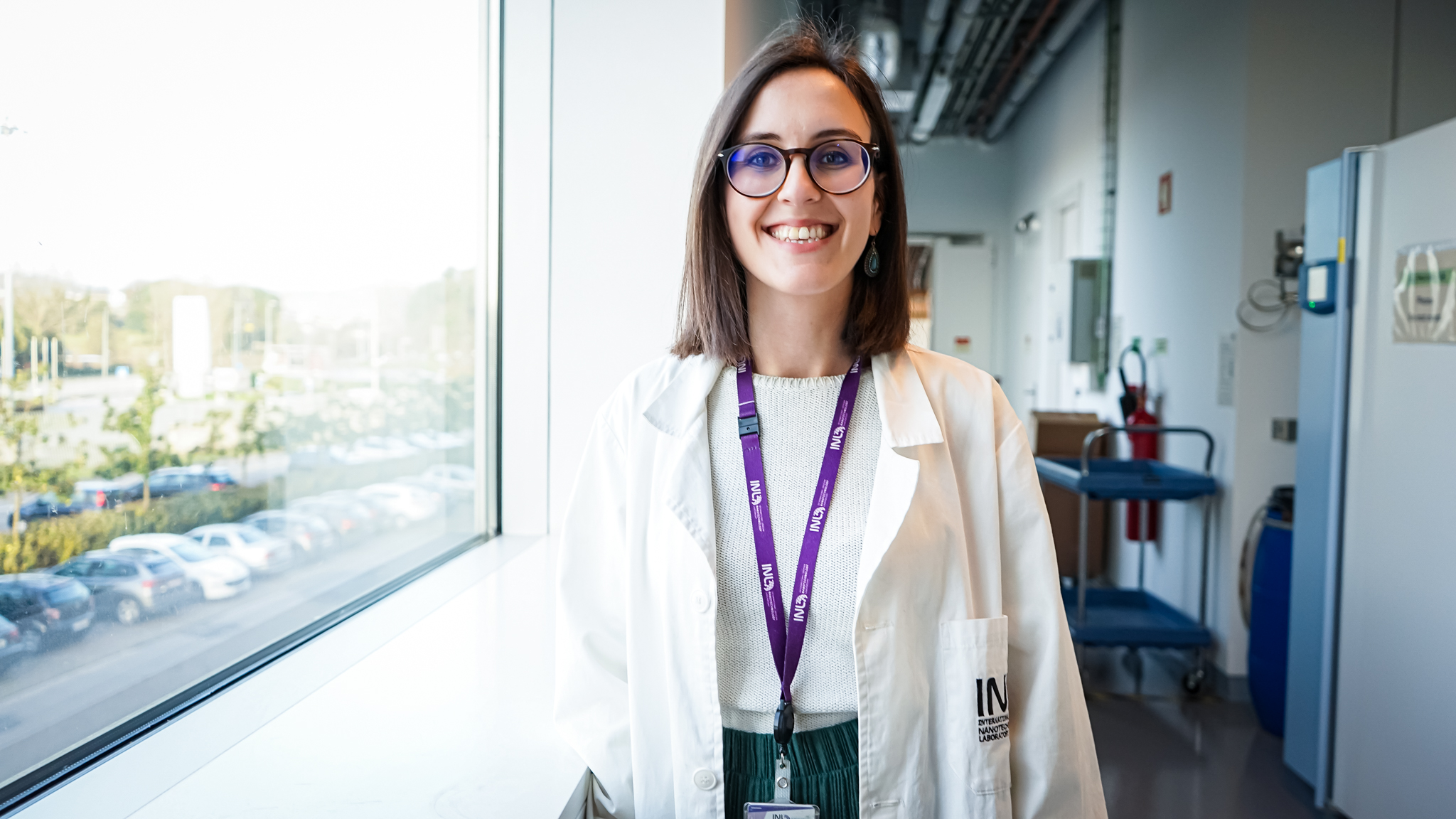
Beatriz Costa, developing 3D scaffolds integrated with nanodiamond photonics platforms
March 8, 2024
Welcome to a new interview highlighting the indispensable role of women in science. We aim to showcase the remarkable contributions of women working at INL across various disciplines and career stages. Join us as we celebrate their achievements, share their stories, and inspire future generations of female scientists.
Today you can meet Beatriz Costa, Junior Research Fellow in the Ultrafast Bio- and Nanophotonics group at INL under the supervision of Dr. Jana B. Nieder.
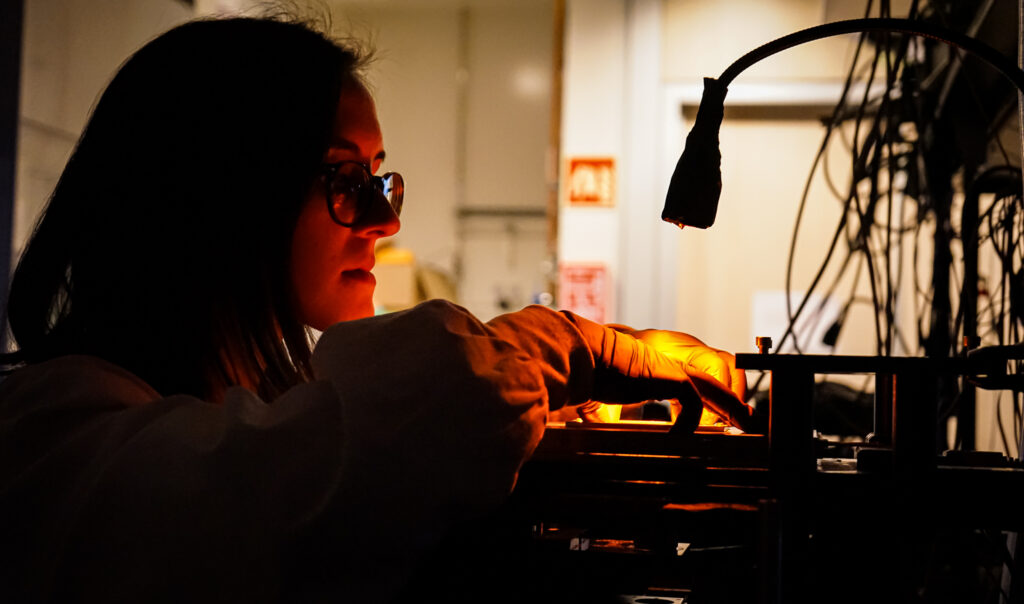
Why did you decide to work in the Ultrafast Bio- and Nanophotonics area?
My decision to pursue research in the Ultrafast Bio- and Nanophotonics area stems from its interdisciplinary nature and potential applications in biomedical engineering. With a background in Biomedical Engineering and a Major in Medical Electronics, I sought a field that would enable me to integrate diverse disciplines and cutting-edge technologies to address pressing healthcare challenges. The Ultrafast Bio- and Nanophotonics area offers a unique convergence of optics, nanotechnology, and biology, providing opportunities to develop novel diagnostic and therapeutic approaches.
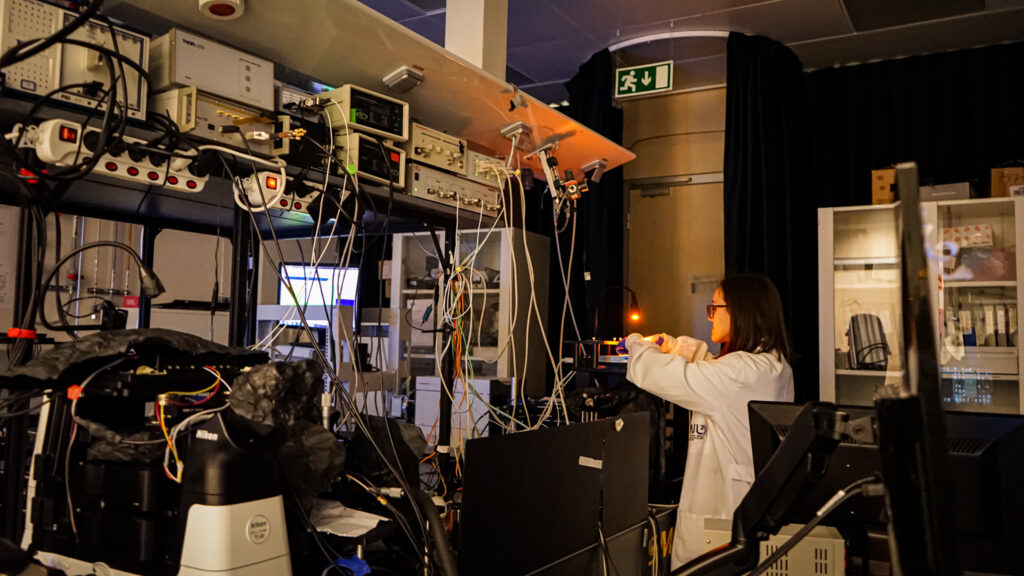
Can you tell us what you are working on at present?
Currently, I am engaged in a research project focused on developing 3D scaffolds integrated with nanodiamond photonics platforms. These scaffolds serve as intricate frameworks to map neuronal activity, particularly aimed at understanding complex signalling patterns within brain organoids and models of neurodegenerative diseases. By employing advanced fabrication techniques combined with innovative materials, our objective is to elucidate fundamental aspects of neuronal function and dysfunction, with the ultimate aim being to understand neurological disorders and potentially contribute to the development of novel therapeutic strategies.

Can you detail how this technology works and its potential applications in neuroscience research?
The technology involves using two-photon polymerization to create 3D scaffolds. A focused laser polymerizes the material at predetermined spots, forming a 3D structure. Nanodiamonds, with unique properties responsive to external factors like electrical fields and temperature, are then grafted onto these structures. Optically detected magnetic resonance experiments are conducted to detect these features by measuring nanodiamond fluorescence during the sweep of microwave fields. When optimized, this technique can measure neuronal electrical signalling, providing insights into cell status. For instance, it can help distinguish healthy cells from those affected by conditions like Parkinson’s disease.
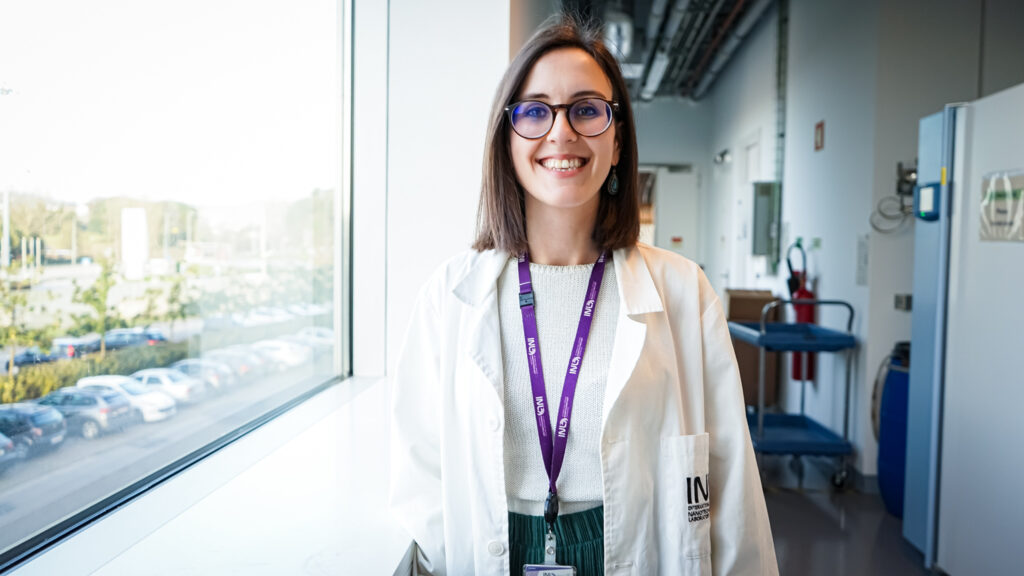
How can we motivate prospective students to pursue this particular field?
Prospective students interested in exploring a multidisciplinary field would find the Ultrafast Bio- and Nanophotonics area highly compelling and rewarding. This dynamic and rapidly evolving field offers an exciting platform for innovation, where students can apply a diverse array of light-based techniques to address a wide range of biological and medical challenges. Its potential to address diverse healthcare challenges and contribute to scientific advancements makes it an exciting and impactful field to pursue.
Text and Photography by Gina Palha, Corporate Communication and Marketing Officer
